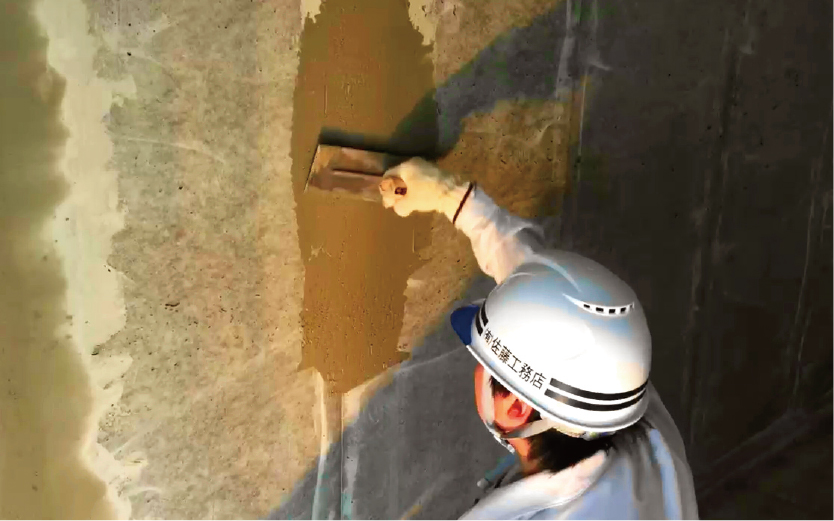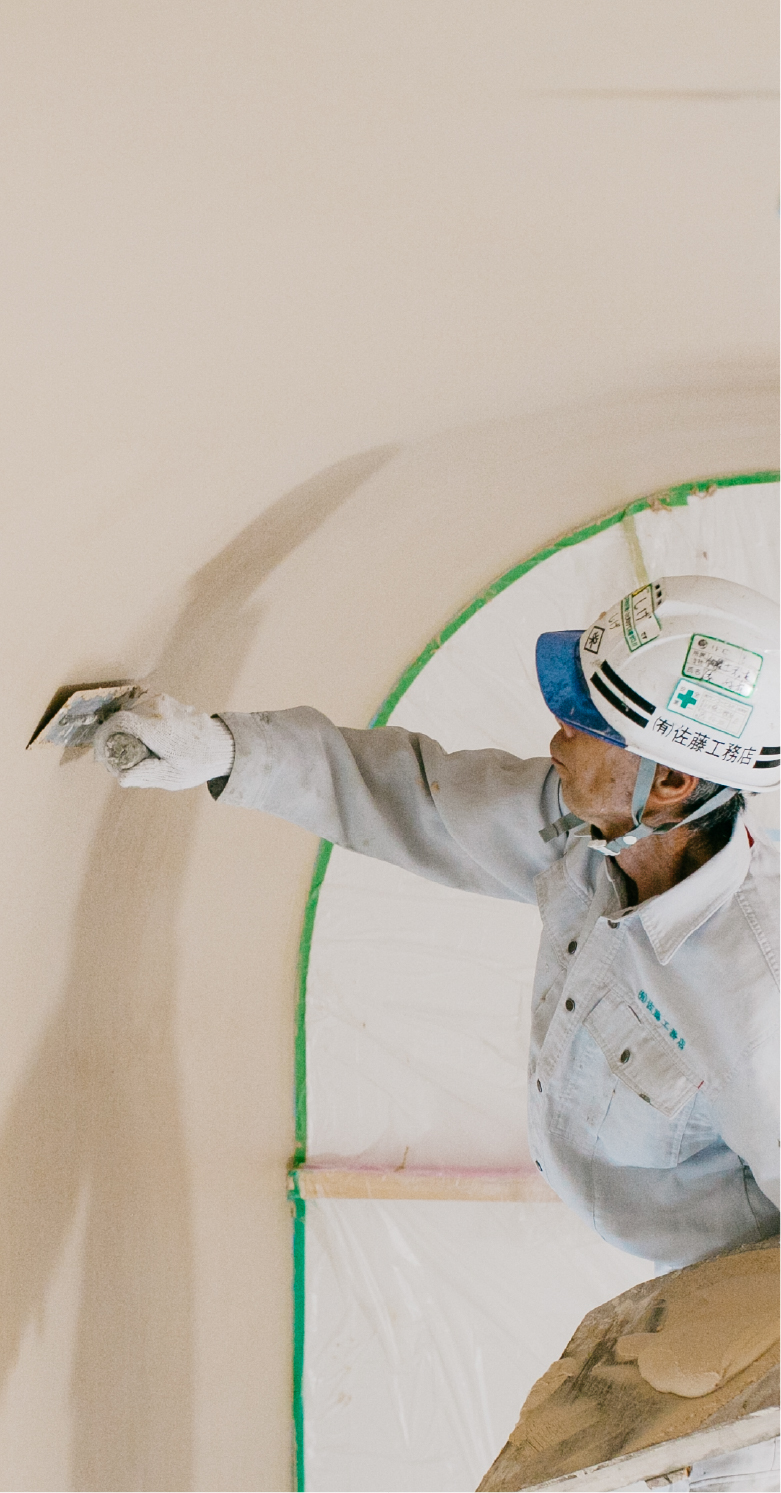


Project History & Major Clients
-
February 2018Hazama Ando CorporationNew University Buildings at Kyushu Sangyo University in Fukuoka
-
October 2019Taisei Corporation BuildingsSakura-machi Redevelopment (East Zone), Kumamoto
-
December 2020Nippon Steel Engineering Co., Ltd. / Toyota Motor Kyushu, Inc.New Dormitory (Building name: tentative), Kanda-Kokura Area
-
December 2020Otaka Construction Co., Ltd.Renovation of Tokyo Interior Furniture Chikushino Store (Building name: tentative)
-
February 2021Shimizu CorporationResearch Building, Yasukawa Electric Corporation
-
July 2021Shimizu CorporationMinami Gaoka Hospital
-
July 2021Nippon Steel Engineering Co., Ltd. / SANKYU Inc.New Construction
of SANKYU Kyushu Building -
September 2021Fujita CorporationKanda Biomass Power Plant
-
December 2021Matsuyama Construction Co., Ltd.Seismic Reinforcement of Buzen City Congress hall
-
February 2022Otaka Construction Co., Ltd.New Construction of Fukuoka Toyopet Co., Ltd. Kokura Branch
-
March 2022Kawazu Kogyo Co., Ltd.Yohara Elementary School
-
September 2022Yasunari Komuten Co., Ltd.New Construction of Ohkland Chuo Ecstage Condominium (Tentative Name)
-
November 2022Taisei CorporationNagasaki TEC Reinforcement Project – CR Building STEP 3 Main Construction (Sony)
-
December 2022Taisei CorporationNew Construction of Second Kyushu Plant (Tentative name), Sawai Pharmaceutical

Work Details
-
Floor Concrete Hold Down

This job is to hold down the concrete after it has been poured and leveled on the floor. Since floors are vital to factories and hospitals, they are held down so that there are no uneven surfaces. The more you press down with a metal trowel, the more durable the floor will be. Concrete is a race against time. It is also important to have the experience to carefully level the floor before it dries, wait until it dries, and assess it.
-
Floor Mortar Application

The mortar appropriate for the application is poured evenly on the floor. The thickness is evened out by shaking a ruler to prevent unevenness in thickness. Balconies and food factories are sloped toward drains, and motor sports are prepared to the millimeter level. It is a difficult job to match the usage and drawings.
-
Floor Leveling

This is the process of creating an uneven floor by pouring a highly fluid mortar (leveling material) after a single pour of concrete. Leveling is a difficult job that requires a lot of experience, as it is done manually. It is mainly required at factories, hospitals, convenience stores, etc. Carefulness and accuracy are indispensable.
-
Wall Mortar Application

The process of evenly applying mortar to a wall that is appropriate for its use requires concentration and patience, and is a great show of skill for a craftsman. Unevenness is noticeable when light shines on it, and there are also various factors to work with, such as gravity, temperature, and humidity. We work to achieve a beautiful wall down to the smallest details.
-
Diatomaceous earth plastering

Diatomaceous earth plastering is required for entrances, reception rooms, galleries, and other spaces where people are entertained. The charm of plastering lies in the high quality of the workmanship, such as the daring to show the shape of the brush, the beauty of the regular pattern, and the way of application. Since it is the main wall used, finishing requires skill and is very rewarding.
-
Wall Concrete Striking Repair

This process is used to clean up the wall surface that is created by sandwiching panels and pouring concrete. Since large panels are placed side by side to form a wall, there will inevitably be some rippling and bumps, which are sanded flat and then repaired evenly so that the cloth and paint can be finished beautifully.
Recruitment Information
- Position
- Sakan Craftsman (Plastering Worker)
- Work Location
- Primarily within the Kitakyushu area. Occasional travel may be required for out-of-town projects.
- Salary
-
Base salary for Specified Skilled Workers
(We work in partnership with a Registered Support Organization): Starts from ¥220,000 (depending on experience)
Additional allowances are included (overtime allowance, qualification allowance, family allowance, and travel allowance) - Holidays
-
80 days off per year (includes Sundays and Typical Japanese National holiday periods such as:
– Golden Week (a series of national holidays in late April to early May)
– Obon (a mid-August holiday for honoring ancestors)
– New Year holidays (late December to early January)
Paid leave and other types of leave available - Working Hours
-
8:00 AM to 5:00 PM
Breaks (in total 2 hours) : 10:00–10:30, 12:00–13:00, 15:00–15:30
Overtime work is rare but may occur. - Benefits
-
Union-based health insurance
Employee pension (kosei nenkin)
Employment insurance
Workers’ compensation insurance (rousai hoken)
Regular health checkups - Transportation Allowance
- Up to ¥10,000 per month
- Ideal Candidate Profile
-
We are looking for the candidates who is honest and not absent. No experience or new high school graduates are welcomed.
*In-house training will provide wall painting training for about 1 month for inexperienced and new high school graduates. - License Requirements
- Japanese Driver’s license (automatic transmission is permitted)
- Additional Information
-
Company dormitory is available.

How to become a Sakan Craftsman
Join a plastering company, learn the skills from the president and senior workers,
and become a professional craftsman.
-
Apprenticeship
 Estimated
Estimated
duration3 to 4 years after joiningAs a new employee, you will work alongside senior craftsmen at a variety of job sites. You will learn about materials such as concrete and mortar, as well as the characteristics of different tools and surfaces.
Since the work must adapt to changes in seasons and weather, the more sites you experience, the more your practical skills will grow.
Each type of site—whether office buildings, commercial facilities, factories, hospitals, or schools—has different requirements. As you gain experience, you’ll also gain a deeper understanding of society and how buildings support daily life.
By observing and learning from senior workers, you will gradually improve your skills.Recommended certification to aim forNikyu Sakan Ginoushi
(Second Class Plasterer) -
Skilled Craftsman
 Estimated
Estimated
duration5 to 10 years after joiningBy this stage, you will have experienced all the basic processes and gained solid knowledge of various materials and tools.
The goal now is to perform each task not only correctly, but with greater speed, efficiency, and precision.
You will continue learning by observing other skilled craftsmen, while also developing your own strengths and areas of expertise. You may also begin mentoring junior workers.
This is the stage where you refine your craftsmanship—aiming for neat, quick, and beautiful work through ongoing practice and collaboration with your peers.Recommended certification to aim forIkkyu Sakan Ginoushi
(First Class Plasterer) -
Lead Site Craftsman / Foreman
 Estimated
Estimated
duration10 years or more after joiningAfter years of experience as an apprentice and skilled craftsman, you may become a Lead Site Craftsman—a trusted presence on any job site.
In this role, you are not only expected to perform high-level plastering work, but also to lead by example: mentoring junior members, checking for delays or issues, and helping the entire team stay focused and on track.
You take a broader perspective, actively supporting both the quality of the work and the people doing it.
With even more experience, you may step into the role of Foreman, taking charge of project coordination, client communication, and overall site supervision.
Your responsibilities include keeping construction on schedule, creating a safe and efficient environment for the crew, and ensuring that no one is overburdened—or underutilized.
You will manage time, costs, and resources with a wide view of the entire process, balancing productivity with care for your team.Recommended certification to aim forKikan Ginoushi
(Master-Level Construction Skills Technician)
(a national certification that bridges the role of skilled craftsman and on-site construction technician in Japan)

Voices from our team

One day at work



















How to become a Sakan Craftsman
Join a plastering company, learn the skills from the president and senior workers,
and become a professional craftsman.
-
Apprenticeship
 Estimated
Estimated
duration3 to 4 years after joiningAs a new employee, you will work alongside senior craftsmen at a variety of job sites. You will learn about materials such as concrete and mortar, as well as the characteristics of different tools and surfaces.
Since the work must adapt to changes in seasons and weather, the more sites you experience, the more your practical skills will grow.
Each type of site—whether office buildings, commercial facilities, factories, hospitals, or schools—has different requirements. As you gain experience, you’ll also gain a deeper understanding of society and how buildings support daily life.
By observing and learning from senior workers, you will gradually improve your skills.Recommended certification to aim forNikyu Sakan Ginoushi
(Second Class Plasterer) -
Skilled Craftsman
 Estimated
Estimated
duration5 to 10 years after joiningBy this stage, you will have experienced all the basic processes and gained solid knowledge of various materials and tools.
The goal now is to perform each task not only correctly, but with greater speed, efficiency, and precision.
You will continue learning by observing other skilled craftsmen, while also developing your own strengths and areas of expertise. You may also begin mentoring junior workers.
This is the stage where you refine your craftsmanship—aiming for neat, quick, and beautiful work through ongoing practice and collaboration with your peers.Recommended certification to aim forIkkyu Sakan Ginoushi
(First Class Plasterer) -
Lead Site Craftsman / Foreman
 Estimated
Estimated
duration10 years or more after joiningAfter years of experience as an apprentice and skilled craftsman, you may become a Lead Site Craftsman—a trusted presence on any job site.
In this role, you are not only expected to perform high-level plastering work, but also to lead by example: mentoring junior members, checking for delays or issues, and helping the entire team stay focused and on track.
You take a broader perspective, actively supporting both the quality of the work and the people doing it.
With even more experience, you may step into the role of Foreman, taking charge of project coordination, client communication, and overall site supervision.
Your responsibilities include keeping construction on schedule, creating a safe and efficient environment for the crew, and ensuring that no one is overburdened—or underutilized.
You will manage time, costs, and resources with a wide view of the entire process, balancing productivity with care for your team.Recommended certification to aim forKikan Ginoushi
(Master-Level Construction Skills Technician)
(a national certification that bridges the role of skilled craftsman and on-site construction technician in Japan)

Voices from our team

One day at work


















Sato Komuten Co., Ltd.
(Yugen Gaisha Sato Komuten)
- TEL
- +81-93-473-3795
- FAX
- +81-93-475-2712
- Founded
- April 1976 – Sato Komuten began operations
- Incorporated
- January 1992 –
Sato Komuten Limited (Yugen Gaisha)
formally established - Executive Officer
- President: Koichi Sato
- Capital
- 15 million yen
- Main Bank
- Nishi-Nippon City Bank, Sone Branch
- Construction License
- Fukuoka Governor Permit (General-1) No. 78266
- Number of Workers
- 30
- Business Description
- Plastering work (Sakan construction)



































